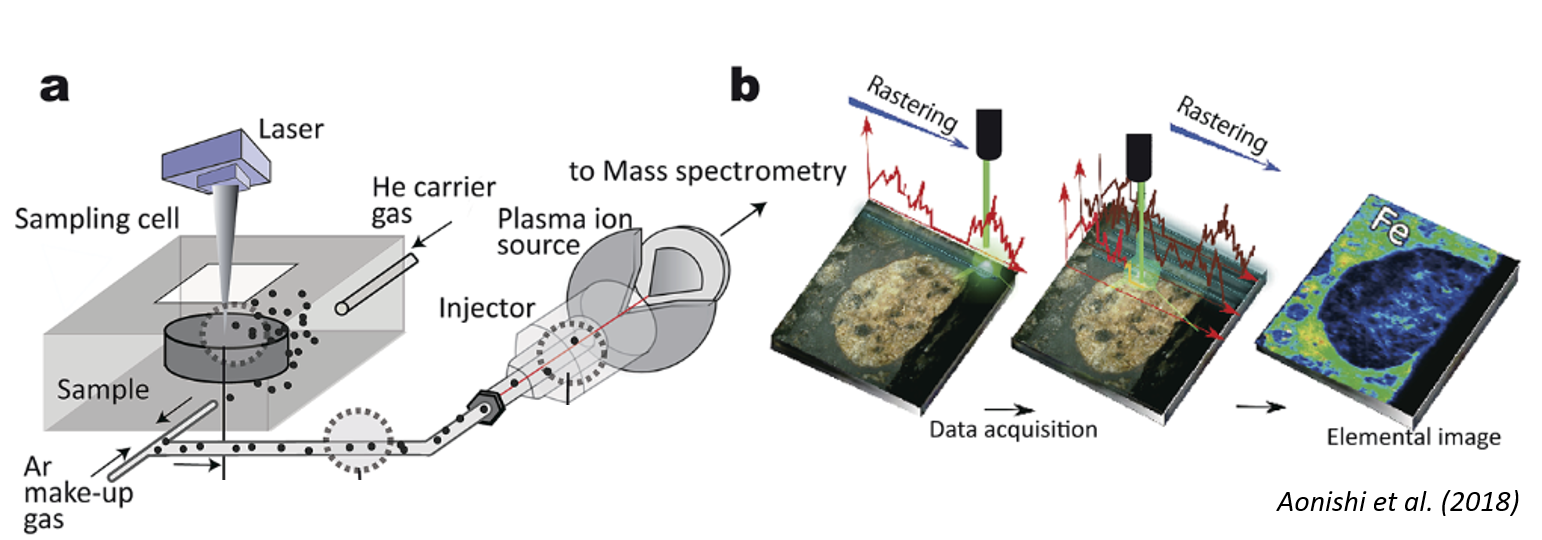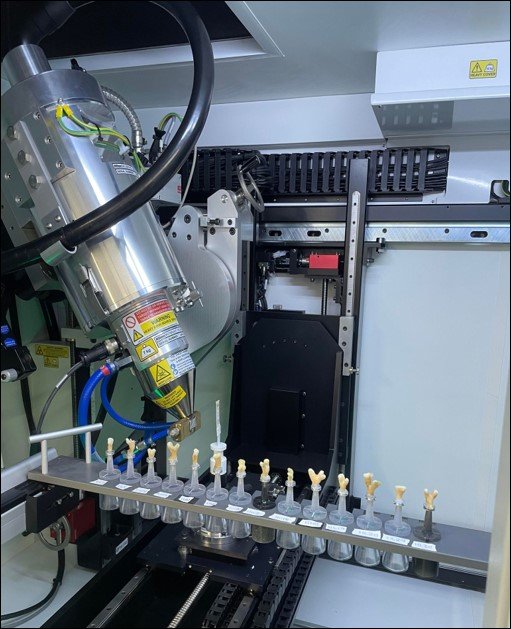A rapidly growing area in the Life Sciences is the concept of Correlative Multimodal Imaging (CMI), where images from a diverse range of techniques (modalities) are precisely combined to create a composite and holistic view of the structure, function, and composition, of a sample from cm to sub-μm scales.
CMI approaches, however, tend to be underutilised in the Earth and Ocean Sciences despite the imaging and in situ analytical techniques used in many approaches being at the forefront of the field. In The Fosterlab we are leading efforts to bring novel geochemical imaging into correlated workflows, not just in the Earth sciences, but into a wide range of fields (from oceanography to biomedical).
Key Questions
1. Can geochemical imaging be precisely combined with other 2D imaging modalities (e.g. optical, Raman, SEM etc) to enrich our interpretations?
2. Can geochemical, and other 2D imaging, be placed in a 3D multi-scale (from cm to nm) correlative imaging framework to address key questions across the sciences?
How do we do it?
It has been known for several decades that coupling a laser ablation system an inductively coupled plasma allows for precise in situ analysis of a range of elements and isotopes in solid samples. More recently however these systems have been used to make images through moving the sample gradually below the laser beam.
We have recently installed a time-of-flight ICPMS that allows for high-resolution (1-2 um) images of the geochemical composition of a range of solid materials. These 2D geochemical images can then be precisely aligned, using digital image registration techniques, to other image modalities such as Raman. As part of Microns2Reefs we are also developing a 3D to 2D imaging pipeline where 3D micro-CT images are first collected, a sample is then physically sectioned and subjected to 2D imaging, and then the 2D slice is aligned back onto the 3D image.
Through techniques and approaches, that are well-practiced in other parts of the University, we aim to bring multi-dimensional and multiscale imaging approaches to tackle key questions in the Earth, Ocean and Environmental sciences and beyond.
Recent Publications
Standish, C.D., Milton, J.A., Brown, R.M., Foster, G.L., 2025, Matrix independent and interference free in situ boron isotope analysis by laser ablation MC-ICP-MS/MS, Journal of Analytical Atomic Spectrometry, 40(5), 1309-1322, https://doi.org/10.1039/d5ja00028a
Williams, T. J., Basford, P. J., Katsamenis, O. L., Solan, M., Foster, G. L., Standish, C., Godbold, J. A., and Archambault, P., 2024, Three-dimensional reconstruction of high latitude bamboo coral via X-ray microfocus Computed Tomography: Scientific Data, v. 11, no. 1, p. 602, https://doi.org/10.1038/s41597-024-03396-9
Williams, T. J., Standish, C. D., Archambault, P., Godbold, J. A., Solan, M., Katsamenis, O. L., Basford, P. J., and Foster, G. L., 2024, Geochemical proxies for deep-sea temperature and nutrient content in cold-water bamboo corals: Chemical Geology, v. 654, p. 122053, https://doi.org/10.1016/j.chemgeo.2024.122053
Standish, C. D., Trend, J., Kleboe, J., Chalk, T. B., Mahajan, S., Milton, J. A., Page, T. M., Robinson, L. F., Stewart, J. A., and Foster, G. L., 2024, Correlative geochemical imaging of Desmophyllum dianthus reveals biomineralisation strategy as a key coral vital effect: Scientific Reports, v. 14, no. 1, p. 11121, https://doi.org/10.1038/s41598-024-61772-2, video here
Evans, A. D., Standish, C. D., Milton, J. A., Robbins, A. G., Craw, D., Foster, G. L., and Teagle, D. A. H., 2024, Imaging of boron in altered mantle rocks illuminates progressive serpentinisation episodes: Geochemical Perspectives Letters, v. 29, p. 20-25. https://doi.org/10.7185/geochemlet.2407
Chalk, T.B., Standish, C.D., D’Angelo, C., Castillo, K.D., Milton, J.A., Foster, G.L., (2021) Mapping coral calcification strategies from in situ boron isotope and trace element measurements of the tropical coral Siderastrea siderea, Nature Scientific Reports, 11, 472, https://doi.org/10.1038/s41598-020-78778-1





